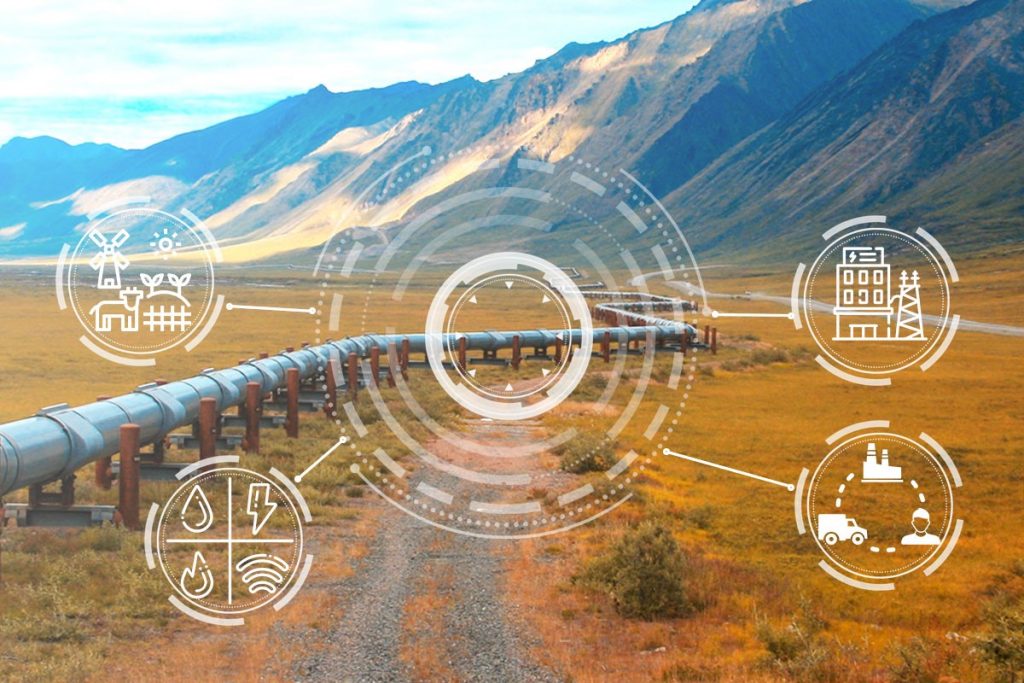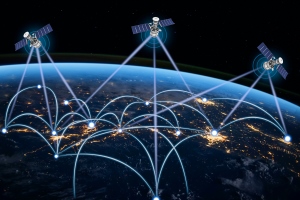Forward-looking savvy businesses are planning to capitalise on the immense data opportunities presented by the Internet of Things. There are already billions of sensors and devices connected, with some analysts claiming the value of the IoT market will be US$650.6 billion (€668.45 billion) by 2026. A 2020 Juniper Research study suggests the total number of IoT connections will reach 83 billion by 2024, rising from 35 billion connections in 2020, says Alastair Williamson, CEO at Wyld Networks explains how sensor-to-satellite services will deliver a bright future for data-driven IoT.
However, the promise of a global network of connected things and people, faces a problem. We simply don’t have access to a global, reliable IoT connectivity service and the bright new era of IoT is being held back by the inadequacies of terrestrial IoT networks. For mass interconnectivity, reliable and secure networks need to be available everywhere and as more businesses adopt IoT as a core part of their operations, the limitations of terrestrial IoT are being revealed.
While ideal in densely populated areas, terrestrial IoT falls down in remote areas, which often lack power, let alone internet connectivity. Cellular coverage fails to reach 85% of the earth, including remote farmland, deserts, mountains and oceans. And yet these places still require communication technology, for example, to check the proper operation of equipment for preventative maintenance, collect valuable weather and agricultural data, and monitor the location and condition of animals and goods.
The manifold advantages of IoT are lost if devices which are supposed to be connected to a network and feeding vital or valuable data to a central hub simply cannot be connected.
Increasingly, more and more organisations in sectors such as agriculture, energy, maritime, logistics and utilities are looking to the skies to meet IoT connectivity needs. The answer to these problems lies in small form satellites known as Low Earth Orbit (LEO) satellites. These tiny, lightweight satellites often no bigger than a shoe box can orbit the earth in a day. As of August 2022, there were some 2,068 ‘nano’ satellites orbiting the planet.

LEO satellites are positioned between 200 and 2,000 kilometres above the earth’s surface. Commonly used in communications or mapping, these satellites are now relatively low cost to produce, launch and maintain. LEO satellites have a narrower field of communication with earth than geostationary satellites and a fast rotation around the earth approximately 7.3 km/s with multiple revolutions per day.
Any given LEO satellite will be above any given point of the earth’s surface at least once a day. And while for many IoT use cases, such a frequency may be sufficient, for some data collection purposes, a constellation of LEO satellites is required to provide reduced latency. As an example, a twenty-four satellite constellation would deliver data once an hour or less.
The data collected from sensors is managed in a software platform that calculates recurring charges. Billing is generally delivered as a multiple of messages, where a message has a fixed packet size typically between 30 and 200 bytes depending on the satellite provider and data protocols. This software layer will then deliver data to the end application via an API, the MQTT IoT messaging protocol or other method.
Virtual satellite network operators
Virtual satellite network operators (VSNOs) are companies which manage these satellite IoT networks without being the primary satellite provider. While specialist satellite companies such as Eutelsat provide the satellite infrastructure, a VSNO provides the means of communicating between the ground and satellite.
In addition to hardware components, a VSNO also delivers secure data in easy to manage form for companies to use. For example, in energy, a VSNO can help companies monitor pipelines, offshore drilling sites and power lines. Logistics operators can use a satellite based IoT system to monitor assets, shipping and rail, road and bridges.
A growing area of use is in the environment sector, where satellites can help monitor deforestation rates in extremely remote places; assess ocean plastic waste and help maintain solar array infrastructure in harsh environments. Tracking and monitoring assets across such sectors leads to significant cost savings, performance increases and sustainability benefits for businesses.
Mix and match
While satellites provide 100% global coverage, data can still be carried over cellular and other terrestrial networks where they are available. However, cellular technology relies on expensive communication towers, which can frequently be difficult to install and maintain. IoT connectivity can be delivered over cellular with NB-IoT and LTE-M, but outside the cellular range requires Low Power Wide Area Network (LPWAN) such as LoRa and Sigfox. The LoRaWAN radio technology can operate at distance and low power with much longer wavelengths, meaning data can travel 10-15km without reaching much resistance. But even with all these benefits, LoRaWAN is limited by scale. On large remote farms, 10-15kms can be a fraction of the property.

VSNOs, with full satellite IoT services, can provide the 100% global coverage corporations seek or can simply fill in the ‘dead’ spots where terrestrial networks are not available. This will help the world to digitise on a new scale even in remote and developing areas where previously it was too expensive or impossible to do so. This new world of data will deliver efficiencies, increase profitability and help meet climate targets. From highly valuable industrial assets to the smallest rurally located sensors data from the Internet of Things will power the future.
VSNOs will increasingly become the vital core of the IoT revolution, delivering an innovative range of sensor-to-satellite IoT services. Whether fixed or on the move, across land or ocean, VSNOs are transforming the way businesses access and use data from assets, no matter where they are deployed, in a simple, affordable way.
The author is Alastair Williamson, CEO at Wyld Networks.
Comment on this article below or via Twitter: @IoTNow_OR @jcIoTnow










